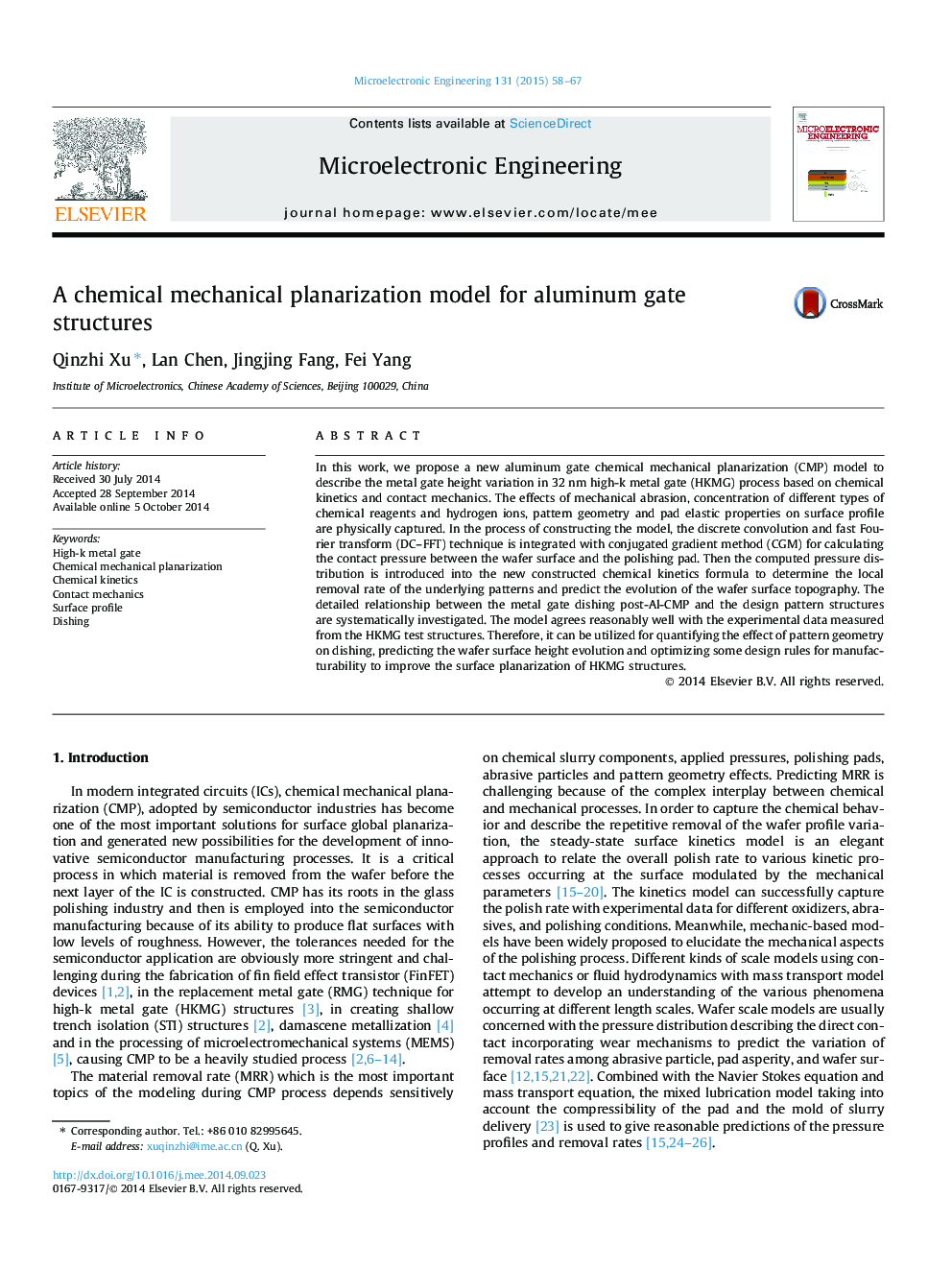| کد مقاله | کد نشریه | سال انتشار | مقاله انگلیسی | نسخه تمام متن |
|---|---|---|---|---|
| 544194 | 1450350 | 2015 | 10 صفحه PDF | دانلود رایگان |
• A new aluminum gate CMP model is proposed to capture the gate height variation based on chemical kinetics and contact mechanics.
• Effects of mechanical abrasion, concentrations of reagents, pattern geometry and pad properties on MRR and surface profile are captured.
• The contact pressure is calculated by combining discrete convolution and fast Fourier transform technique and conjugated gradient method.
• The design pattern structure has a prominent effect on the metal gate topography and the model is verified by the experimental data.
In this work, we propose a new aluminum gate chemical mechanical planarization (CMP) model to describe the metal gate height variation in 32 nm high-k metal gate (HKMG) process based on chemical kinetics and contact mechanics. The effects of mechanical abrasion, concentration of different types of chemical reagents and hydrogen ions, pattern geometry and pad elastic properties on surface profile are physically captured. In the process of constructing the model, the discrete convolution and fast Fourier transform (DC–FFT) technique is integrated with conjugated gradient method (CGM) for calculating the contact pressure between the wafer surface and the polishing pad. Then the computed pressure distribution is introduced into the new constructed chemical kinetics formula to determine the local removal rate of the underlying patterns and predict the evolution of the wafer surface topography. The detailed relationship between the metal gate dishing post-Al-CMP and the design pattern structures are systematically investigated. The model agrees reasonably well with the experimental data measured from the HKMG test structures. Therefore, it can be utilized for quantifying the effect of pattern geometry on dishing, predicting the wafer surface height evolution and optimizing some design rules for manufacturability to improve the surface planarization of HKMG structures.
Figure optionsDownload as PowerPoint slide
Journal: Microelectronic Engineering - Volume 131, 5 January 2015, Pages 58–67
